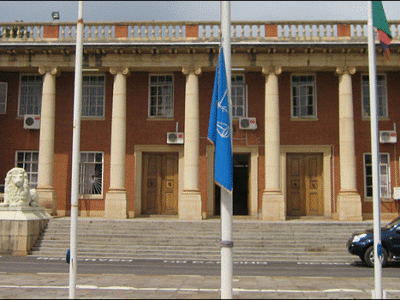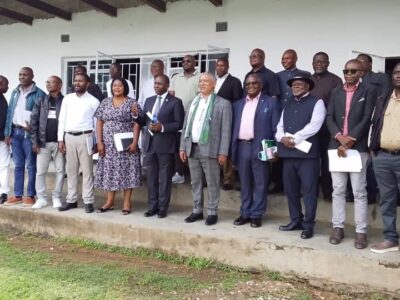The Zambian government has stated that it was premature to fully assess the potential impact of the United States’ aid freeze, as the relevant authorities have yet to determine the extent of the effects on key sectors.
Zambia receives approximately US$ 600 million annually in aid from the U.S., a significant portion of the country’s external assistance.
Foreign Affairs and International Cooperation Minister, Mulambo Haimbe, delivering a ministerial statement in Parliament on Friday, explained that this support goes towards vital sectors such as health, agriculture, education, and governance, with disbursements channeled through various U.S. agencies, including USAID, the Center for Disease Control and Prevention (CDC), the Department of Defense, the Peace Corps, and the Millennium Challenge Corporation.
Of the total U.S. assistance to Zambia, 75 percent is allocated to the health sector. A large portion of this aid supports the country’s HIV/AIDS response, as well as health commodities.
Haimbe highlighted that the funding has been crucial in improving health outcomes, with over 16,000 health workers and community health workers being remunerated under these health programs.
The funding has also contributed to a significant reduction in maternal mortality rates and an increase in life expectancy in Zambia.
“The support granted to Zambia through the U.S. President’s Emergency Plan for AIDS Relief (PEPFAR) was benefiting over 1 million citizens through access to antiretroviral drugs,” Haimbe said.
In response to the aid freeze, which was initiated on January 20, 2025, via an executive order by U.S. President Donald Trump, Haimbe noted that the U.S. Department of State had issued a second order waiving the freeze on humanitarian assistance.
This waiver is aimed at continuing to provide lifesaving medicines and medical services, as well as food, shelter, and other forms of humanitarian assistance to Zambia.
While the government has received some relief with the waiver, which covers crucial health services, Haimbe acknowledged that the freeze could impact other sectors not covered by the waiver.
The government is still awaiting further analysis to understand the potential consequences for these areas.
The U.S. government’s 90-day freeze on foreign aid is part of a broader re-evaluation and realignment of U.S. foreign policy objectives. During this period, the U.S. will decide whether to resume, modify, or terminate aid to foreign partners.
While the freeze has raised concerns, Zambia’s government has expressed cautious optimism, particularly in relation to health sector support, which is expected to continue under the waiver.
However, officials are monitoring other areas that could be affected by the ongoing reevaluation process.
WARNING! All rights reserved. This material, and other digital content on this website, may not be reproduced, published, broadcast, rewritten or redistributed in whole or in part without prior express permission from ZAMBIA MONITOR.













Comments